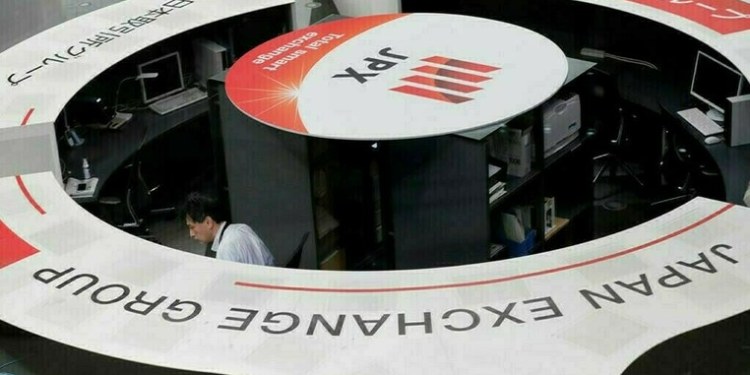Wall Street’s main indexes slid on Tuesday as investors turned risk-averse following reports of geopolitical tensions escalating in the Middle East, while also assessing data that pointed to a stable labor market.
A White House official said that the United States has indications that Iran is preparing to imminently launch a ballistic missile attack against Israel, following which the benchmark S&P 500 extended losses to a near one-week low.
At 10:21 a.m. the Dow Jones Industrial Average fell 346.60 points, or 0.82%, to 41,982.02, the S&P 500 lost 65.54 points, or 1.14%, to 5,696.94 and the Nasdaq Composite lost 316.54 points, or 1.74%, to 17,872.63.
Nine of the 11 S&P 500 sectors trended lower, although a 3% spike in crude prices aided a 1.5% gain on the energy sector . The Dow Jones Transport Average tracking airline stocks dropped 2%.
CBOE’s market volatility index, Wall Street’s fear gauge, jumped 3.46 points to a three-week high of 20.19, while the yield on benchmark Treasury bonds hit session lows.
Meanwhile, the Labor Department’s job openings and labor turnover (JOLTS) survey showed job openings rose 8.04 million in August, compared with estimates of 7.66 million, as per economists polled by Reuters.
Wall Street Week Ahead: Jobs data to test US stock market’s soft-landing hopes
Separately, the Institute for Management Supply’s (ISM) report showed manufacturing activity stood at 47.2 in September, versus estimates of 47.5.
Traders are now pricing in a 64.6% probability of a 25 bps reduction at the November meeting, compared with over 60% before the datasets, as per the CME Group’s FedWatch Tool.
“The path of the Fed is assumed to be cutting rates successively that seems to be driving force behind markets. Until we get into the teeth of earnings, the labor market data is extraordinarily important,” said Keith Buchanan, senior portfolio manager at GLOBALT Investments.
“There is increased easing of the labor market in a gradual pace, but it is not necessarily going to thrust us into a recession in the near term.”
Investors will also parse through comments from Fed presidents Raphael Bostic and Thomas Barkin among others for their insights on the economy and the monetary policy outlook.
The comments follow Chair Jerome Powell’s at a conference on Monday, where he reiterated that the Fed is likely to reduce borrowing costs by an additional 50 basis points by year-end, based on data that pointed to robust consumer spending and gross domestic income.
Wall Street’s three main indexes closed September higher, bucking a historical trend where equities’ performance have been weak on average during the month. The benchmark S&P 500 and blue-chip Dow notched their fifth straight month in gains and closed near record highs in the previous session.
Markets also monitored a port strike on the East Coast and the Gulf Coast halting the flow of about half the nation’s ocean shipping.
Retailers account for half of all container shipping volumes and shares of Costco, Walmart were down 1.3% and flat, respectively .
Declining issues outnumbered advancers by a 1.77-to-1 ratio on the NYSE and by a 2.95-to-1 ratio on the Nasdaq.
The S&P 500 posted 29 new 52-week highs and one new low, while the Nasdaq Composite recorded 38 new highs and 67 new lows.

Source: Brecorder





























